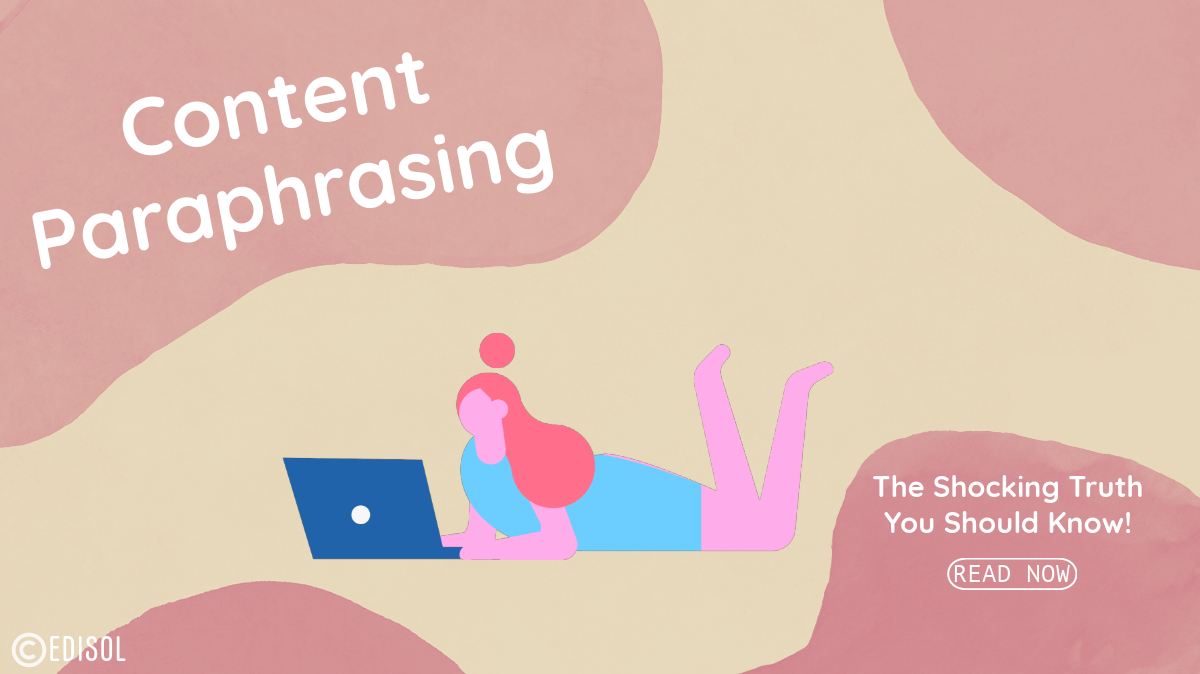Have you ever thought about the impact of paraphrased content? When used correctly, a content paraphrase tool not only helps you save time but also understand the original content better while avoiding the addition of too many direct quotes. That said, what happens when you approach it the wrong way?
Is paraphrasing bad?
There is a very fine line between plagiarised and paraphrased content. When you paraphrase content a little too much, your content slips into plagiarised territory. Were you aware that Google imposes penalties on websites with plagiarised content of more than 10%? This harms your SERP ranking and may keep your website from top results on search engines.
In addition, Google’s Search Quality raters are usually on the lookout for helpful content that serves the purpose of the page. This is further explained by its E-E-A-T guidelines that consider experience, expertise, authoritativeness and trust, which includes accurateness, honesty, safety and reliability.
If your page has content that contains rehashed content from a credible site published before yours, Google’s guidelines prevent your page from enjoying a high search rank. This is the link between paraphrased content and SEO that is often missed by brands who wonder why their page’s performance doesn’t hit the mark.
Read on to get an in-depth understanding of the negative aspects of paraphrased content and how it can affect your site’s rank.
Higher chances of plagiarism
Plagiarism is the act of copying content from credible sources without attributing it to the original author. While using a paraphrasing tool can help you present clear and concise ideas, one of the major limitations is a higher chance of developing plagiarised content.
Here’s a quick snapshot of how your paraphrased content can lead to plagiarism. This happens when you: Spin the content with minimal changes using synonyms and different tenses Use AI-generative or content paraphrase tools that do not heed copyright laws and use exact phrases from the source
All this can lead to a significant drop in page ranking on search engines, thereby affecting the credibility and reputation of your brand.

Misinterpretation of original content
Another significant drawback of content paraphrasing is the out-of-context content. Paraphrasing can sometimes lead to misinterpretation that changes the original meaning. This leads to missing out on the core thoughts or assumptions that can severely undermine your content’s quality.
Duplicated content
Another drawback of ineffective paraphrasing is that it relies heavily on someone else’s work. This means that it could miss the target when it comes to your goals in terms of:
- Demographics (age, income, gender)
- Geography (location)
- Psychographics (buying behaviour, attitude)
Moreover, paraphrased content rarely does justice to conversion rate optimisation (CRO) in terms of:
- Keyword inclusion
- Authentic and credible content
- SEO-friendly headlines
All in all, duplicate content lowers your rankings. This, in turn, makes it difficult for the target audience to locate your website or blog, and the brand goes unnoticed.
For example, if you are writing to market a clothing brand and you use content that duplicates the previously published content of a competitor, Google will penalise the brand you’re writing for by decreasing your ranking. This reduces the brand’s reach.
Subpar content
Content quality is the most impactful factor in boosting the SERP ratings of your page. A well-written story not only helps retain your target audience but also enables your brand to stay ahead of the game.
On the flip side, unsatisfactory content can decrease the number of visitors to your site. As per reports, 55% of strategies for content marketing focus entirely on producing superior quality content that brings readers back to the website.
Content paraphrasing can hinder quality as it often leads to common mistakes such as:
- Wrong spellings
- Grammatical mistakes
- Sentences that don’t flow well
- Gaps in logic
Avoiding paraphrasing is the best bet since it can compromise the quality of your content.
Outdated research and information
Providing correct and relevant information to readers is the primary agenda when you create content. However, whether you are paraphrasing manually or using content paraphrase tools, the accuracy of the information may suffer.
If statistics and facts change when you alter original content, your page will pay for it in terms of lower quality ratings and a less-than-ideal reader experience. This will not only increase the bounce rate but also result in low search rankings.

While discussing the pros and cons of paraphrasing may be a good idea when it comes to academic writing, there are too many things that can go wrong when you rely on a content paraphrase tool for marketing purposes. Not only do your SERP rankings take a hit, but paraphrasing can land you in legal trouble as well.
The smartest and safest way to create a credible and impactful piece of content is to do your research, gather facts, and follow the best practices of 10X content and storytelling.
We can help you navigate these challenging waters with ease. Connect with us to know more.




